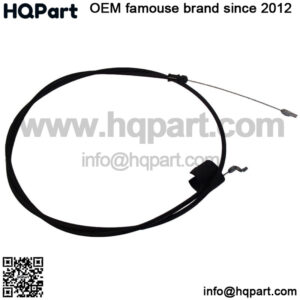A cable wound like a coil is a design in which the metallic strands are wound around the housing like a coil spring. This type of design is much easier to bend and route through areas requiring curves and turns, however they are more likely to bind and compress which can cause functionality problems. Cables that are structurally designed to run straight (lengthwise) down the cable. This type of design is not as prone to binding and are much less pliable.
There are several causes and symptoms of a throttle control cable that is wearing out and may need to be replaced soon.
1. Improper cable adjustment and slow acceleration response
When there is excess slack or the cable is too tight, this can cause intermittent delays in throttle response relative to pressing down on the accelerator pedal. This can also result in the opposite effect as well, in that the excess slack can create a delayed throttle return response. This can cause more throttle to be applied unintentionally, creating a dangerous situation.
2. Dirty or frayed cable
When the cable is dirty, many of the same effects of too much slack (noted above) can also be experienced due to the cable occasionally sticking in certain positions. When the internal wire of the cable is frayed or the individual wires are broken, this can cause an improper response or complete lack of response to acceleration when the gas pedal is pressed.
3. Cruise control not working properly
Other symptoms can include problems with the cruise control functioning properly if your vehicle is equipped with this feature. Because the cruise control functionality is operated via the same throttle control cable, you may also notice intermittent delays in cruise control working or maintaining a consistent speed when engaged.
“Keyword”
“e-z-go golf cart throttle linkage”
“club car throttle cable adjustment”
“club car throttle cable diagram”

